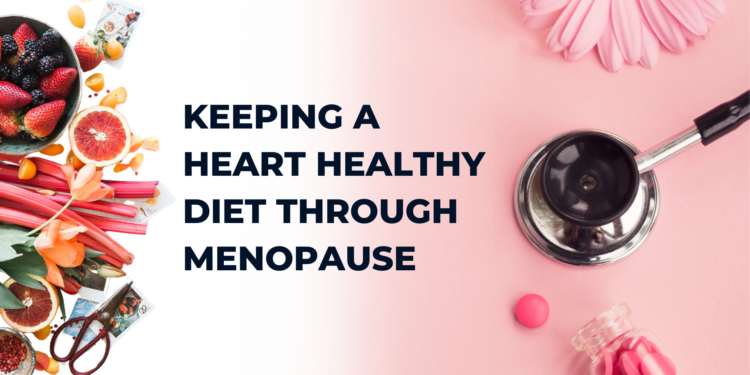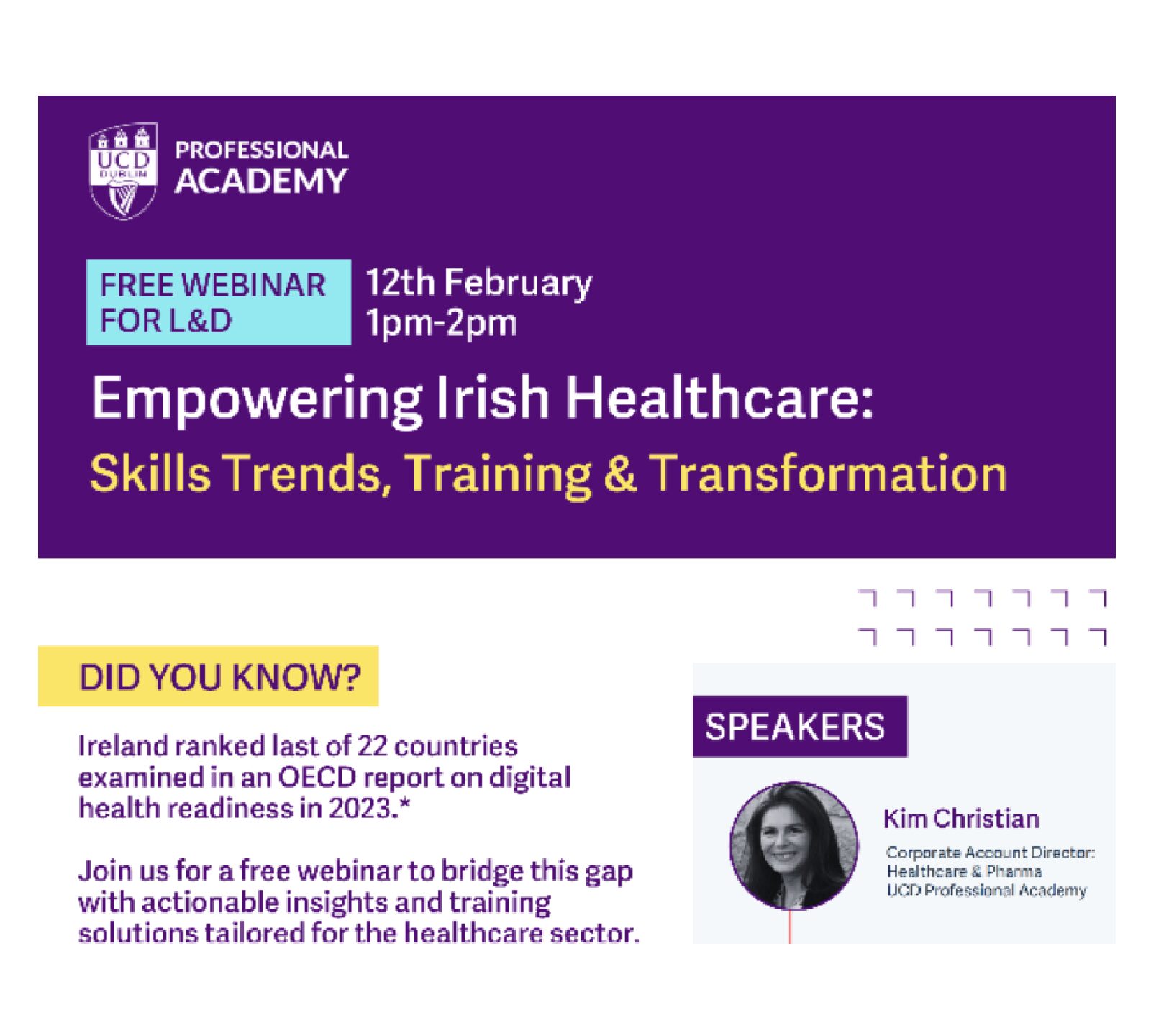“My cholesterol was totally normal until I hit menopause. I couldn’t tolerate statin medication nor did I really want to go on it, so with a few changes to my diet and lifestyle this seems to be helping”. – Katherine, age 57
Gillian McConnell, CORU Registered Dietitian DI019371, BSc(Hons) Dietetics, PgC Applied Sports Nutrition
Heart health issues have always been believed to be a man’s issue more so than women’s. This is true, up to a point. But from the age of 40, a woman’s risk of heart disease and stroke increases as she moves into menopause.
We recently spoke to Gillian McConnell, CORU Registered Dietitian DI019371, BSc(Hons) Dietetics, PgC Applied Sports Nutrition to find out more about how women can keep a healthy heart diet through menopause.
After the age of 50, women are seven times more likely to die from heart disease, than breast cancer. Gillian told us, “The silver lining is that problems with the heart typically take two years to develop and are on preventable and manageable. Women need to focus on the diet and lifestyle factors that ideally should be embedded before and during peri-menopause, as well as after menopause. The sooner this is started, the better.”
Menopause and the Resulting Changes
Gillian told us that while menopause doesn’t directly cause cardiovascular conditions. it raises the risk for developing them.
She says “Higher oestrogen levels prior to menopause may explain the difference in risk as oestrogen and other sex hormones regulate fundamental cardiovascular functions’ and although one might argue that cardiovascular disease (CVD) risk increases from the effect of aging, it has been seen that the use of hormone replacement therapy (HRT) has been associated with protective effect against coronary artery calcification.
“While it isn’t completely clear exactly how oestrogen plays a part, it is thought that oestrogen helps in promoting greater blood flexibility and discourage plaque formation and inflammation in the arteries. Of course, there isn’t just an instant plummet in oestrogen levels once you hit menopause, this is why we need to look back at peri-menopause where fluctuating hormone levels can be where the start of cardiac issues occur, a time when often heart health isn’t even on women’s’ radars. Figure 1 indicates the effects of oestrogen on the cardiovascular system.”
Factors increasing risk for heart disease
Gillian outlines those key factors which can increase the risk of heart disease:
Inflammation, a hot topic, but not often associated with heart health. Chronic inflammation, the type that persists for months or years, can irritate the blood vessels, possibly promoting the growth of plaque, loosening plaque and triggering blood clots that may cause a heart attack. We’ll talk more on reducing inflammation later. Oestrogen exerts anti-inflammatory effects, leading to a protective effect on blood vessels.3
Visceral fat, or belly fat as it’s sometimes known, is the fat surrounding the vital internal organs. An excess of visceral fat is linked to high cholesterol, elevated blood pressure and linked to Type 2 Diabetes, which are all risk factors for heart disease. Women who carry weight around their middle have a greater chance for heart attack than women who are just heavier overall.4 A waist circumference of 76.2cm (30 in) or more is associated with more than two-fold higher risk of CHD5 and on average women gain 1.7% fat mass per year.6 Lowering oestrogen levels have also been associated with loss of lean body mass.
Diabetes & pre-diabetes are a major risk factor for cardiovascular disease. Prolonged elevation of blood glucose levels is harmful to blood vessels and the nerves that control the heart. Oestrogen seems to contribute to glucose homeostasis through increased glucose transport into the cell, so a lack of oestrogen has been associated with a progressive decrease in glucose-stimulated insulin secretion and insulin sensitivity as well as an increase in insulin resistance.7 Fortunately, the strategies to control diabetes are also good for your heart.
Hypertension if an issue in the menopausal or postmenopausal years, plays a significant role in the development of coronary heart disease, chronic heart failure and stroke in older women.8 The extra force created by high blood pressure may create tiny tears in vessel walls that encourage plaque build-up and further narrowing of the arteries as well as sodium sensitivity increases during menopausal transition, frequently leading to intermittent fluid retention (oedema of the legs, hands, and lower eyelids), contributing to higher cardiovascular risks.9
Lipid profile changes occur during the menopause transition, with a 10-15% higher LDL-cholesterol and triglyceride levels and slightly lower HDL cholesterol levels.
What can women do?
Gillian continues, “Diet can play a major role in modifying the risk for CVD and as Dietitians, we really want women to focus in on what they can add to their diets to make it more heart healthy.”
She notes that one of the most important things is to focus on following a consistent healthy dietary pattern, one in line with the Mediterranean style of eating. “This contains protein sources mainly from plants, nuts, fish, or alternative sources of omega-3 fatty acids; fat mostly from unsaturated plant sources; carbohydrates primarily from whole grains; at least five to seven servings of fruits and vegetables per day; and moderate dairy consumption.11 Figure 2 below taken from Willet et al, (2019)11 gives a nice overview of the main characteristics of a heart healthy diet.”
She concludes, “In particular, the scientific evidence is high for the following;
Omega-3 fatty acids are polyunsaturated fats that are beneficial for heart health. Eicosapentaenoic acid (EPA), docosahexaenoic acids (DHA) and alpha-linolenic acid (ALA) are the three main omega-3 fats. As a group, omega-3’s lower blood triglyceride levels, slow the growth of plaque in arteries and have a slight effect on lowering blood pressure. EPA and DHA are found mainly in oily fish should be consumed once or twice per week. ALA needs to be converted from ALA to EPA and DHA, but this happens at very slow rates, which means ALA food sources like flaxseed, olive oil, walnuts and avocado need to be consumed daily. Women who completely avoid these food sources or have raised triglyceride levels may benefit from omega-3 supplements with EPA and DHA, 200 to 500mg a day of combined EPA and DHA.12
Saturated fats coming from fatty meats, butter, lard, palm oil, coconut oil, as well as cakes, biscuits, pies and pastries need to be reduced to prevent the elevation of LDL levels, which promote plaque build-up in the arteries. Ideally less than 10% of total daily calories should come from saturated fat.”












